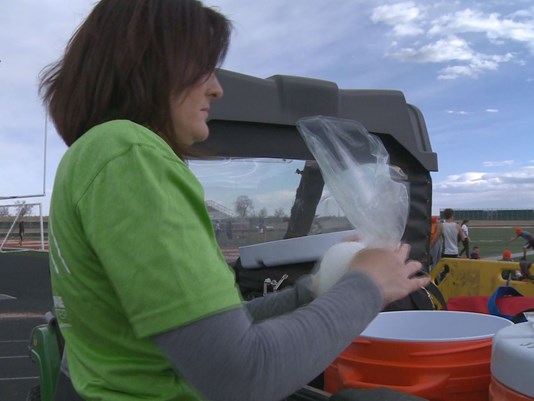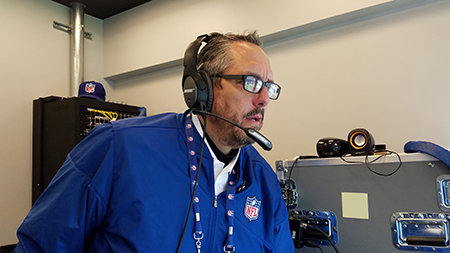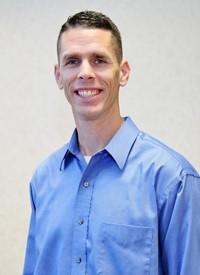
Article reposted from VailDaily
Author: Richard Williams
Richard Williams is an athletic trainer who recently joined the team at Vail-Summit Orthopaedics. He works both in the office and in surgery. It’s pretty cool that he has a Super Bowl ring from 2015. In this article, I asked Williams to describe life as an athletic trainer in the NFL.
Dr. Rick Cunningham
Vail-Summit Orthopaedics
Football is back and for many people, it is an entertainment business that allows us to cheer on our favorite team each week. I had the privilege to work in the NFL as an athletic training student for two years and as a certified athletic trainer for a year.
“I hope that one day people will stop looking at athletic trainers as “water boys” and learn how much time and effort we put into the care of these athletes on a daily basis.”
This time of year reminds me of the hard work, dedication and time spent with those teams during training camp and moving forward into the season. I was lucky enough to work for two different NFL organizations, including the Cincinnati Bengals and the Denver Broncos.
The athletic training staff is only one component to the success of an NFL team, but it is a major part of helping athletes achieve maximum production from their bodies and ultimately keeping them on the field. The daily duties for an athletic trainer, as well as the hours they work, make the job difficult mentally and physically.
A DAY IN THE LIFE
Most people do not know what an athletic trainer’s job entails. Some people may see athletic trainers as “water boys” with the easiest job in the world, but in reality, athletic trainers do much more than make sure the athletes are well hydrated. Athletic trainers are responsible for treatment throughout the entire injury process for a player, from the time of injury to the athlete returning to play.
During my time in the NFL, I would typically get up at 4 o’clock in the morning and arrive at work around 4:45 a.m. to start treatments by 5:30 a.m. Treatments would consist of therapeutic modalities (i.e. ultrasound), joint mobilization techniques, soft tissue massage, stretching, aqua therapy, physical exercises and core strengthening.
Treatments would continue until the players would go to individual and team meetings. NFL players cannot perform at their highest level if they do not continue to take care of the bodies. After player meetings, there would be more treatment sessions before practice.
While players were attending meetings, myself and another athletic trainer would set up the field for practice. Before practice, athletic trainers would each lead 10-15 athletes through a thorough stretching program. During practice, athletic trainer duties included surveying the field for possible areas where the players were at higher risk of injury, hydration, immediate evaluation and treatment of player’s injuries, and helping the players or coaches whenever needed.
After practice, we would take medical equipment inside and begin further treatment sessions until the players went to additional meetings in the afternoon. After the players finished meetings, we would finish final treatments for the day. Training camp was always the most intense work schedule as we would have a walk-through practice and a full practice the same day. Our daily hours would be from 5:30 a.m. until 11:00 p.m.
‘ON CALL’
I believe that the head athletic trainer of the Houston Texans, Geoff Kaplan, said it best when he was interviewed about being an athletic trainer in the NFL.
He said, “It’s a very attractive job because all people see is Sunday, from noon to 3. What people don’t see is my cell phone is on and I am on call, 24 hours a day, seven days a week during football season. We’re on call just like a doctor is on call. During the season, you work six months straight without a day off. Depending on if we’re traveling or not, we’re working between 80 and 90 hours a week. During training camp, we’re working 110 to 120 hours a week. The Sunday part is very attractive but you have to have a very understanding family to do the Monday through Saturday part.”
I am thankful for the opportunity I had to work in the NFL and although I made great friendships and relationships with amazing athletes, I am more thankful for the education I was able to obtain and the skills and techniques that I will use for the rest of my career.
I was lucky enough to be a part of the 2015 Super Bowl champion Denver Broncos organization that made the long days and grueling season all worth it.
I hope that one day people will stop looking at athletic trainers as “water boys” and learn how much time and effort we put into the care of these athletes on a daily basis.
Richard Williams is an ATC and OTC to Dr. Richard Cunningham, M.D. Vail-Summit Orthopaedics. Williams received his undergraduate degree in athletic training from the University of Cincinnati. As an undergrad, he completed two seasonal internships with the Cincinnati Bengals. Upon graduation from the University of Cincinnati, Williams worked as a certified athletic trainer fellow for the Denver Broncos and went on to be a part of the Super Bowl 50 championship team. Williams is a board-certified orthopedic technologist and licensed surgical assistant. For more information, visit http://www.VailKnee.com.








